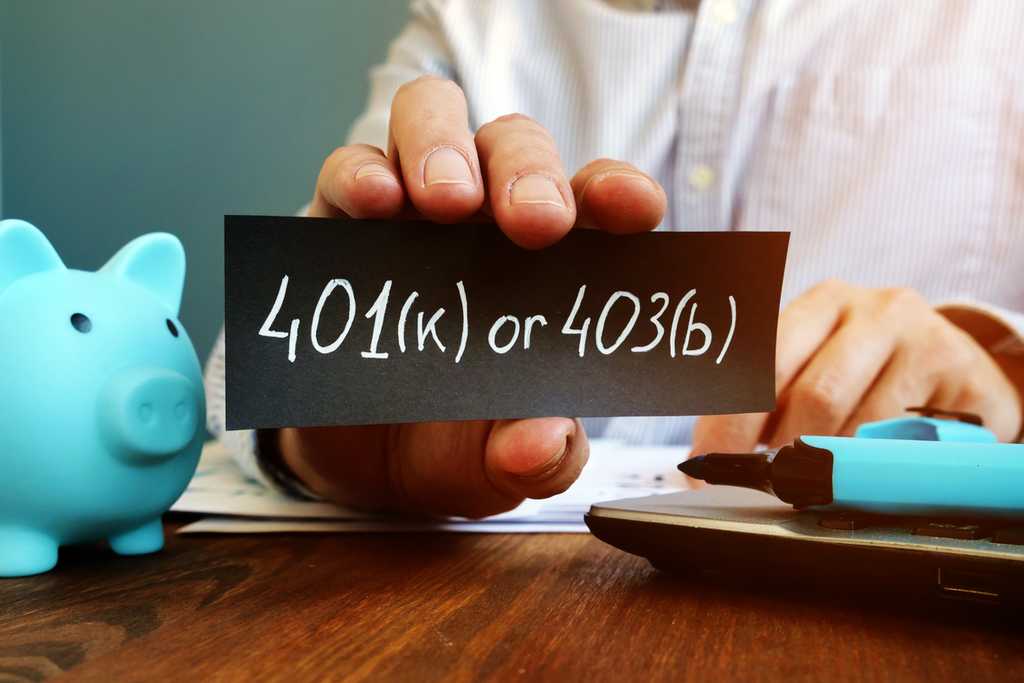Retirement planning is an important and multistep journey that evolves over time. In order to enjoy a comfortable, secure (and hopefully) fun retirement, you will need to build up the financial resources to fund it all. Planning your retirement requires much thought, dedication, and the help from qualified individuals to help with your planning.
A tax-deferred retirement account is integral in your retirement planning. Two of the most common types of retirement accounts are 401(k) and 403(b) accounts. Named after the section of the tax codes that describe, 401(k) and 403(b) both plans have very little practical difference between. While these plans are similar, they have important differences you should be aware of, especially if you're moving from an employer that offers one to an employer that offers the other.
The primary difference between the two is the type of employer sponsoring the plans—401(k) plans are offered by private, for-profit companies, whereas 403(b) plans are only available to nonprofit organizations and government employers. In this article, we’ll take a look at some of their key similarities and differences.
What Is a 401(k)?
Named after the federal tax code it falls under from the Revenue Act of 1978 - 401(k) is a retirement plan offered through private employers. A 401(k) allows you to contribute a fixed percentage or dollar amount directly from your paycheck before you pay taxes on it. This, in turn, lowers your taxable income for the year. If you are lucky, many employers offering a 401(k) plan may make matching or non-elective contributions to the plan on behalf of eligible employees and may also add a profit-sharing feature to the plan. Earnings in a 401(k) plan accrue on a tax-deferred basis. As of 2020, more than $6.3 trillion was invested into 401(k) plans.
At retirement, when you withdraw funds from your 401(k) (known as taking distributions), you begin to both enjoy the income from this retirement mainstay and, but also face its tax consequences. For most people and with most 401(k)s, distributions are taxed as ordinary income, much like a paycheck.
There are many details of 401(k) plans, here are the highlights:
- Employer Match. Most employers who offer a 401(k) will also offer a match. Basically, the more you contribute the more the employer will match – to a limit. In many cases this is from 3%-6%. This is on top of your salary. That is why all financial advisors recommend you contribute at least the minimum percentage to maximize the company contribution.
- Contribution Limits. In 2020, you can contribute up to $19,500 of your own money in your 401(k). If you are 50 and over, you are eligible to contribute an additional $6,500 a year. The combined contribution of your money and your employer’s match cannot exceed $57,000 per year (or $63,500 if you’re age 50 or older).
- Early Withdrawal Penalties. Except for special exceptions, you can’t withdraw from your 401(k) until you are 59 ½. If you do take money out of your 401(k) early, you’ll be hit with significant penalties and state and federal income tax.
- Required Minimum Distributions. Even though you can withdraw at age 59 ½ - many people try to keep the money in their 401(k) as long as possible in order to allow the compounding and growth to continue. However, the IRS requires you to start withdrawing a certain amount from your 401(k) beginning at age 70. These are called RMDs—Required Minimum Distributions.
What Is a 403(b)?
A 403(b) plan is also named after the tax code it was outlined. 403(b) plans and 401(k) plans are nearly identical in nature, but 403(b) plans are only available for employees of tax-exempt organizations. That means if you work for a hospital, school, university, church or nonprofit, chances are you have access to a 403(b) account. For all practical purposes, though, it functions just like a 401(k).
As with 401(k) plans, contributions to 403(b) plans are tax deductible, employers can also offer matching contributions, and you can even take a loan out against either account, (again, most experts advise strongly against this).
Differences between 401(K) and 403(b) accounts.
- Eligibility - 403(b) plans are only offered by tax-exempt organizations, such as hospitals, schools, universities, nonprofits and religious organizations.
- Investment Options - 403(b) plans only offer mutual funds and annuities, but 401(k) plans offer mutual funds, annuities, stocks and bonds. 401(k) plans are typically more expensive for the company, so they can offer a wider range and sometimes better quality of investment options.
- Employer Match - While available, fewer employers offer matches with their 403(b) plans. This is due to Federal regulations created by the ERISA act (the Employee Retirement Income Security Act). Most employers want to avoid these regulations because they cost time and money.
- Investment Options - In the past, 403b plans restricted their participants’ investment options primarily to variable annuities. However, this restriction was removed years ago, and now most 403b plans let you invest in a wide variety of mutual funds and annuities.
- Cost - 403(b) plans typically have much lower overhead costs due the investment options and managing the plan.
Which is better?
As an employee or business owner, you really don’t have a choice based on the type of company or organization you are affiliated with. Both plans offer employees a significant ability to shelter income from taxes and save for their retirement, regardless of the differences between the two. For many, if not all, participating in a qualified 401(k) or 403(b) plan is one of the smartest decisions you can make for your financial future.
Reasons these plans have significant participation rate
- It's painless - Your employer automatically deducts your contributions every time you are paid. So, instead of writing a check, or finding other ways to spend the money, the work is done for you every time you get paid. Essentially, the money isn’t there to spend. It is already in your retirement account.
- You have a long-term financial retirement strategy - When you enroll in a 401(k) or 403(b) plan, you are allowed to make contributions as a specific dollar amount or as a percentage of pay. You also have the ability to change those amounts on a periodic basis. Many financial managers strongly recommend that you set it up as a percentage of pay. That way, when you get a raise, you are giving yourself a raise to the plan.
- The employer match is like getting “free money” - Most plans offer some kind of matching contribution to encourage participation. This is money specific to the plan, and a great employer benefit. Don’t pass it up if offered.
- Significant tax breaks when you put the money in and when you take it out at retirement - First, those contributions made when you invest in your plan, are tax-deductible. The money you contribute doesn't count toward your gross income for the year, lowering your taxable income – which is a nice perk!
- Second, those investments inside the plan grow tax-deferred. Compared to savings or a standard brokerage account, you would have to pay taxes on your interest or dividends at the end of each year. With 401(k) and 403(b) plans, those earnings are rolled back into the plan and don't have to be listed as income on your tax return until you withdraw them. Your savings grow much faster this way. In addition, for most people, when you do need to start withdrawing from the plan at retirement, most likely your overall income will be much less than when you were working full time. While we don’t know what the future tax rates will be, it is reasonable to predict that you’ll be taxed at a much lower rate on those withdrawals.
- Your 401(k) and 403(b) savings are portable - Meaning, if you change jobs, it can be readily moved into the new employer plan or an IRA. Doing this simple procedure will keep your savings tax-deferred.
Social Security won't be enough to keep you financially comfortable in retirement. Social Security was meant to provide a modest percentage of your retirement income. Financial planners generally say you'll need between 70 percent and 90 percent of your pre-retirement income to live comfortably in retirement. Social security won’t cover that. So, contributing as long, and as much to a 401(k) or 403(b) plan is the best move to ensure you have enough money to cover your retirement. If you plan on working to your last day, it also provides a great nest-egg for your spouse or family members.
Whether your job provides a 401k or a 403b, it’s important to evaluate the available investments and understand the expenses and the administrative costs of the overall plan. From an informed position, you can best decide where and how to invest your money, and build a sound financial future.

